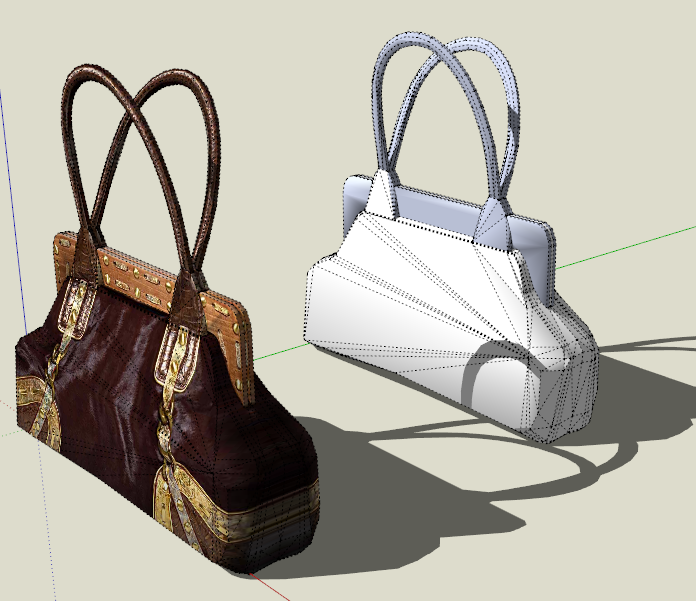Look at urgen's thread for some examples of organic models with masterful texturing. I'm not sure if he posted any sort of tutorial, but maybe the model's themselves are helpful.
http://sketchucation.com/forums/viewtopic.php?f=40%26amp;t=3482

Look at urgen's thread for some examples of organic models with masterful texturing. I'm not sure if he posted any sort of tutorial, but maybe the model's themselves are helpful.
http://sketchucation.com/forums/viewtopic.php?f=40%26amp;t=3482

Might try using a secure FTP program such as WinSCP.

WinSCP is a free file manager for Windows supporting FTP, SFTP, S3 and WebDAV.
(winscp.net)
Probably a known bug - open the Ruby Console window and if an error occurs when selecting a DC with CO dialog open.
Copy and paste this code into the Ruby Console. It will draw a Construction line along the view direction of the camera. Then you can place the Axis along the cline and construct geometry which is aligned to the Axes.
Sketchup.active_model.entities.add_cline(Sketchup.active_model.active_view.camera.eye,Sketchup.active_model.active_view.camera.direction)
I have source code for a command-line converter available here[1]. The documentation is not up to date - although there's no time this morning to clean it up. It should compile just by typing "make" in the root folder (where the Makefile is.)
It builds for me under Windows using MinGW-64, I can't test Macs. You would need to modify the Makefile to point to your copy of the SketchUp SDK. You will also need a c++ dev command-line dev environment setup which might be a huge hurdle by itself. There is a link in the readme to an easy to install Windows g++ compiler suite.
Batch processing can be done by specifying a sub-folder in the output file:
[1] https://github.com/jimfoltz/jf-sketchup-c-api-sandbox/tree/master/skp2skp
Why not generate a local copy, open it in a WebDialog, and distribute with the extension? It'll work offline and save SketchUcation a little server cost.
It is possible to have a plugin not only remind you, but to actually save the model as v2014 whenever the model is saved by normal methods (using File > save, or ctrl-s.)
I'll post something hopefully today.
One problem though is a doubling of the save time since the model will be saved once as the default version, then again as the v2014 version. So maybe this is not the best way.
If materials are not important and you are using Windows, you could try the mesh importer from the Plugin Store.
Sent from my iPhone using Tapatalk
Before jumping into implementation details like "iterating" and "search and replace", I'd like to understand more about the broader use of such a plugin.
No matter how much preparing and planning I do, I'm going to have to constantly update my master templates for these components
What is a template in this context and why will you need to constantly update them?
Essentially, is sounds like you want to be able to define the order of user-editable attributes in the Components Options dialog?